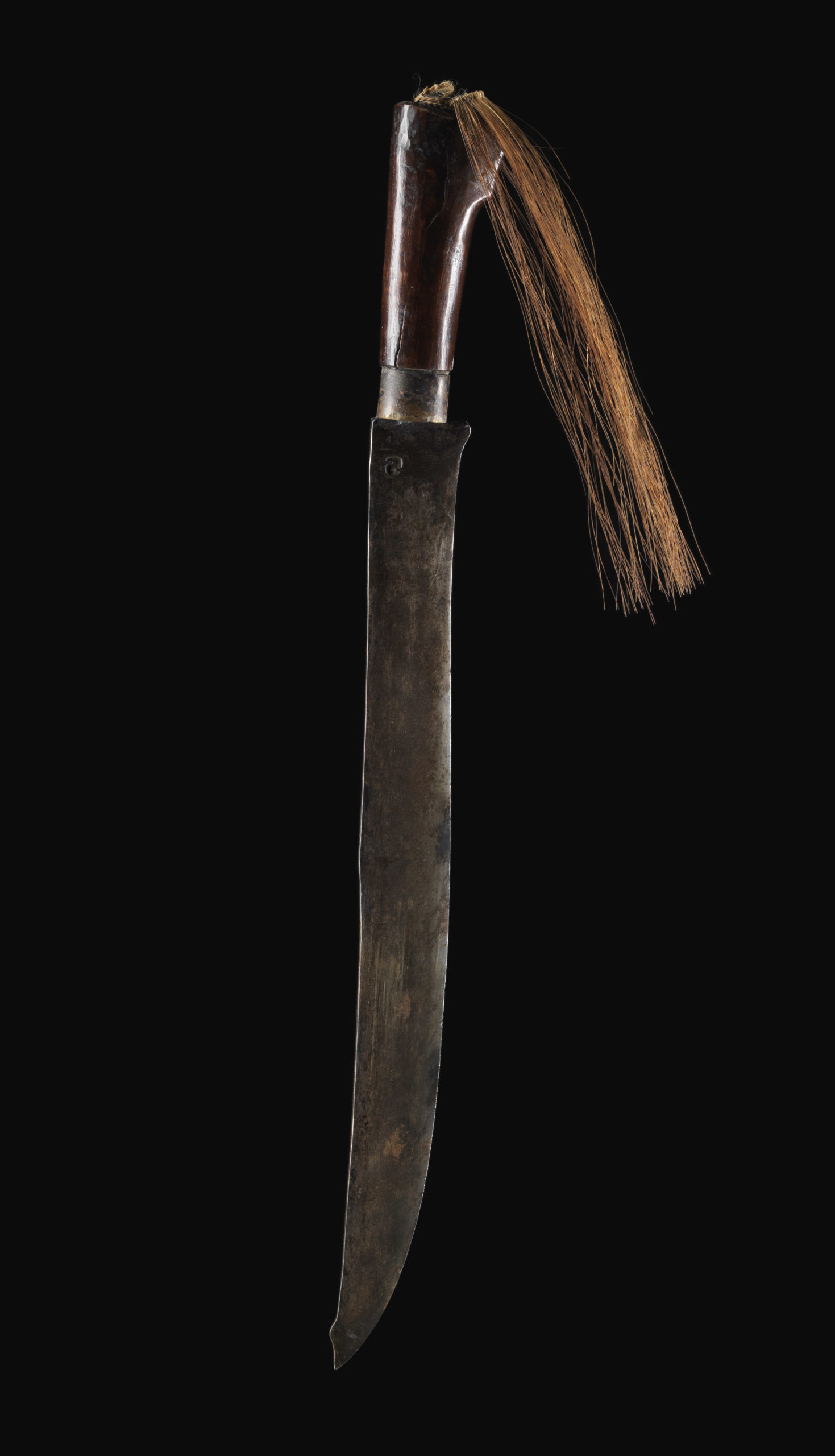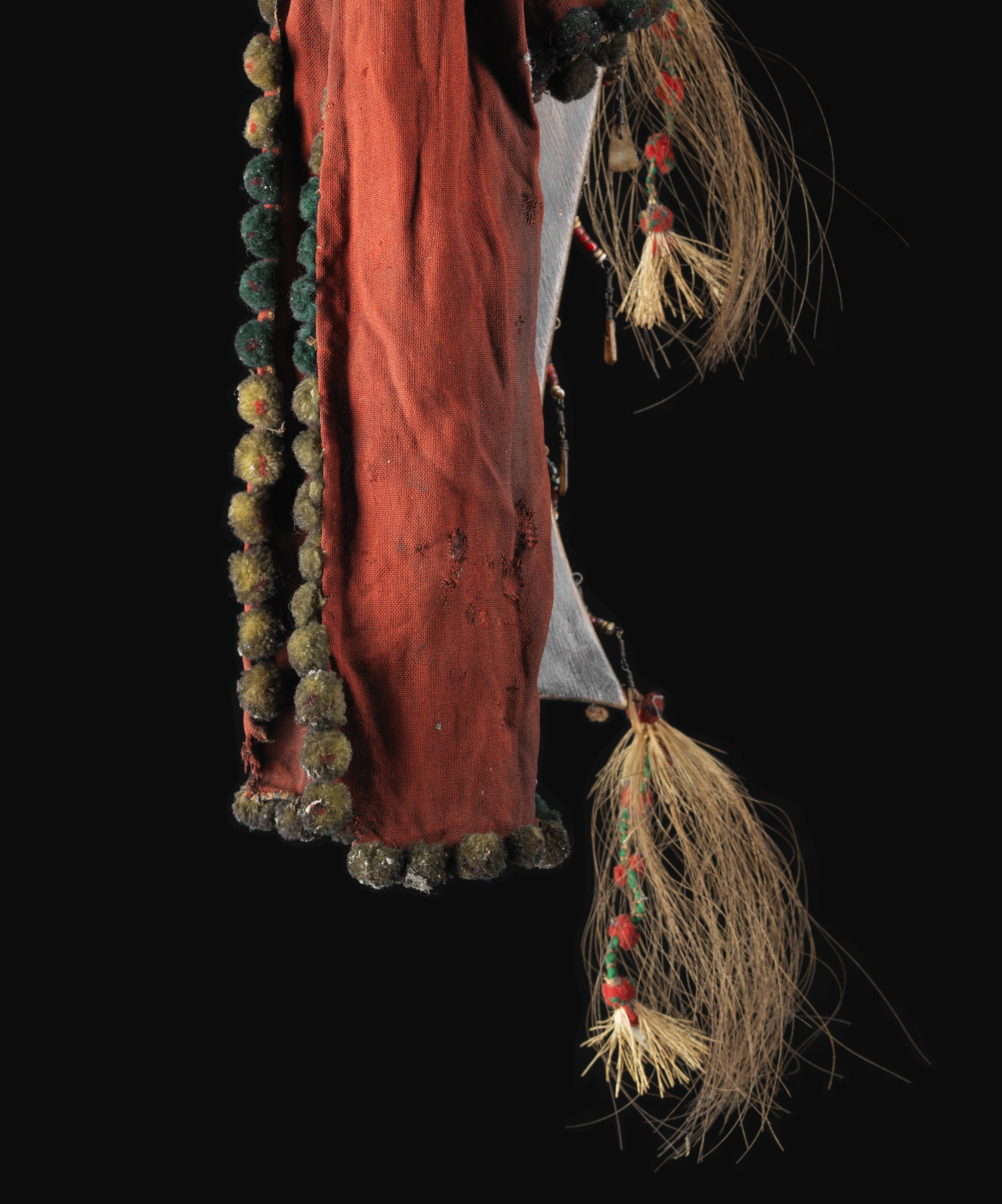Hand knife “takip”
A special form of bolo, called takip ny bekur (“sword of the woman”). This form is considered a woman’s knife and is only used by the Ilongot. The shape of the blade seems to have been influenced by Spanish or Dutch “hangers”, hunting swords, from the 16th and 17th centuries. The piece is formally very closely related to Atayal knives on Formosa. Above all, the formal references to knives (lalau, rinadrug) from Formosa are clearly visible. The design of the sheath is based on a snake’s head.
The term takip is obviously close to takit, the “sword” of the paiwan on Formosa. In some cases the sheath is decorated with a braided lizard motif. The cord or rattan winding of the vaginal body, which is open on one side, imitates the skin of a snake. The sword (or knife) thus symbolically becomes the skinning and biting snake, which is regarded in mythology as the ancestor of the nobility.
The Ifugao (below: Amganad, Ayangan, Kiangan, Gilipanes, Quiangan, Tuwali Ifugao, Mayoyao Mayoyao, Mayaoyaw) with 180,000 people (census of 1983) live in Ifugao Province. This province in particular is home to the rice terraces, which have been declared a World Heritage Site and are now one of the biggest tourist attractions in the Philippines. The terraces have been laid out in centuries of work with simple tools. They extend over hundreds of metres of altitude up the slopes and are sometimes only a few metres wide. The term “Ifugao” is derived from “ipugo”, which means “inhabitants of the earth”, “mortals” or generally “people”. But it can also be related to “from the mountains”, as pugo means “hill” or “mountain”. The central settlement area of the Ifugao extends over the south-eastern part of the Philippine Cordilleras, which are today mainly known for the rice terraces of Banaue, which are now one of the main attractions of the whole Philippines.
The Ifugao have some special features that set them apart from the rest of the Igorot. Among them are the typical houses of the Ifugao (bale), which are built in pile construction, whereby the construction, consisting of a large room, is supported by four pillars at a height of about three metres above the ground. The construction is essentially similar to the Atayal and Puyuma houses on North Formosa. They are accessible via a mobile ladder (tete) and a single entrance (panto). In addition, huts (abong) in lightweight construction are common, again very similar to the Atayal huts on Formosa, so that one can save the long ways to the fields. Rice stores are called alang; they are guarded by a wooden idol (bulul). The high bale may have been built to protect against raids in the times of intertribal fighting, but they may also have an inherent cosmological-spiritual component, as the division of the overall structure into three parts has established itself throughout the entire Young Austronesian (Metal Age) region as the equivalent of the three-level world view.
In addition to their perfectly organised rice terraces, which dominate the landscape of Central Luzon, the Ifugao groups stand out for their rich oral tradition (hudhud and the alim), which reveals an unusually complex world of myths. The alim and the hudhud traditions and songs of the Ifugao were selected as one of the 11 “Masterpieces of the Oral and Intangible Heritage of Humanity” in 2001 and officially listed as “UNESCO Intangible Cultural Heritage of Mankind” in 2008.
| Object | Hand knife, “takip” |
| Culture | Nord-Philippinen, Luzon, Ilongot |
| Time | 19th century |
| Dimensions | Length 61 cm |
| Material | Steel, wood, rattan, textile fibre, wool, beads, brass plates, animal hair, wire |







